Form the matrix product corresponding to the following linear combinations
Specify all matrix dimensions and column vectors.
Solution. Consider . Consistency of vector addition then implies . Form
The vectors entering into the linear combinations are
The scaling coefficients of the three linear combinations are
For let and be a solution of the linear system . Compute the angle between and .
Solution. From deduce . From , deduce that . The FTLA states , hence , and the angle between the two vectors is (orthogonal).
With known to be orthogonal, carry out the following block matrix multiplication. Identify dimensions of all blocks, and the blocks and the dimensions of the resulting matrix
Solution. Consistency of multiplication requires , thereby leading to . Apply “row-over-columns” for matrix blocks, noting that , ,
Compute and the projection of onto for
Solution. Apply “row-over-columns” rule to obtain
The above implies , and by the FTLA the projection of onto is the zero vector.
Find the decomposition of
Solution. Carry out reduction to upper triangular form, noting multipliers used in the process
Find . Compute
Verify
State the eigenvalues and eigenvectors of , with the matrix describing: (a) rotation by ( matrix) followed by reflection across the axis ( matrix).
Solution. Let , . From sketch below, note that rotated by becomes , which when reflected acorss the horizontal axis is again , thus an eigenvector with associated eigenvalue . Similarly, vector rotated by becomes , which when reflected acorss the horizontal axis is , thus an eigenvector with eigenvalue .
Compute the eigendecomposition of
Solution. The characteristic polynomial is
with resulting eigenvalues , . For perform row reduction to find eigenvector
Similarly, for
Since , the eigendecomposition exists and is orthogonal
Find the SVD of
Solution. Recall SVD , with , orthogonal, orthogonal. For this problem . Further recall . The matrix has rank , and can be taken as
Since is orthogonal take
to obtain
Take to obtain
Deduce that , completing the SVD.
Form the matrices , where is the matrix describing: (a) rotation by ( matrix) followed by reflection across the axis ( matrix).
Solution. The matrices are
Find bases for the four fundamental spaces of
Solution. Note that with , . Carry out row reduction
to find .
: FTLA states . Take linearly independent columns as the basis, e.g.,
: FTLA states . Take linearly independent rows as the basis, e.g.,
: FTLA states . From row reduction of
consider system
Take as a free parameter to obtain
A basis vector for is therefore
Verify
FTLA states . Continue above row reduction of to obtain reduced row echelon form
and form system
Consider , to be free parameters to obtain
For obtain
For obtain
Deduce that a basis set for is
Verify
